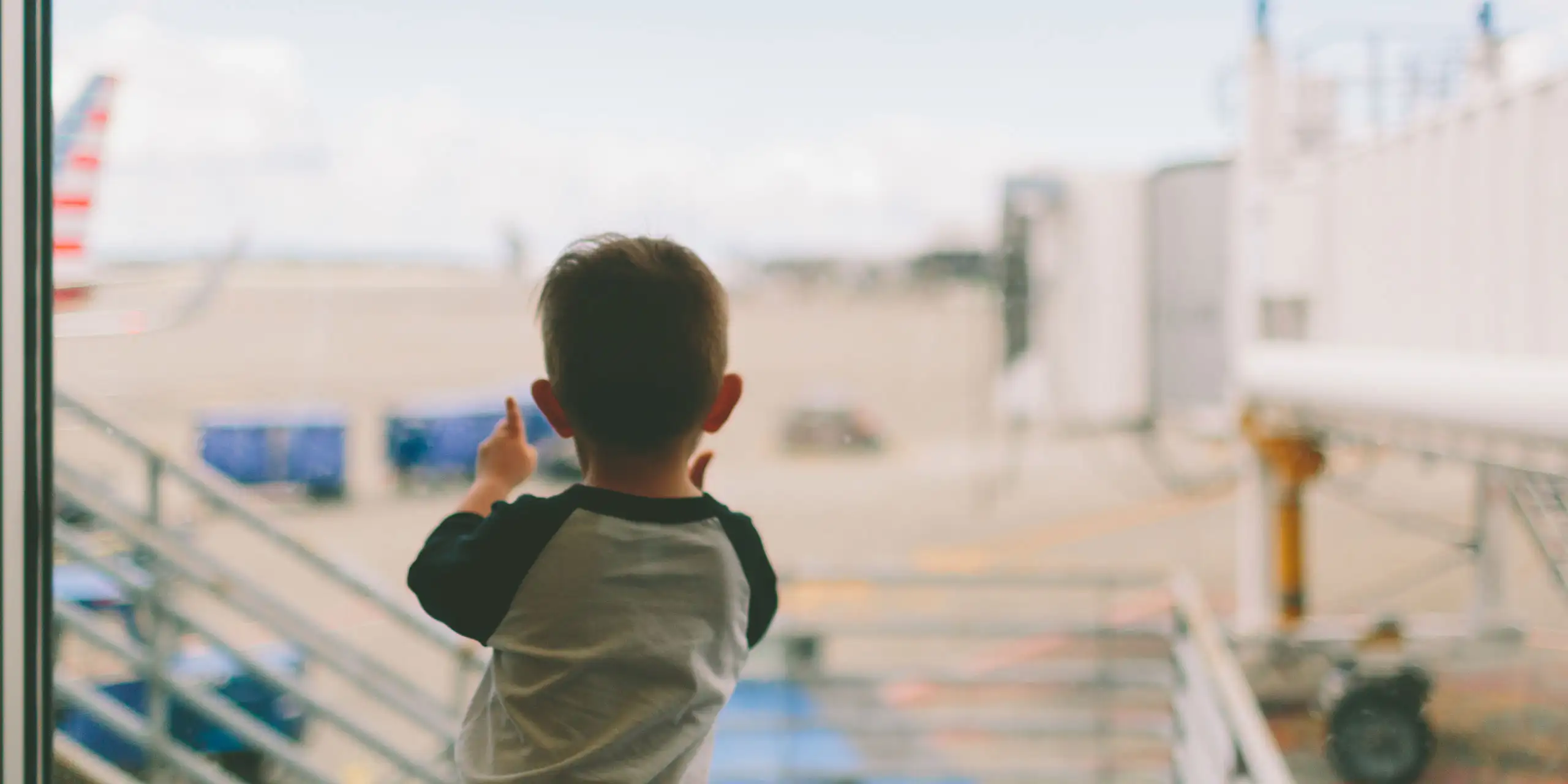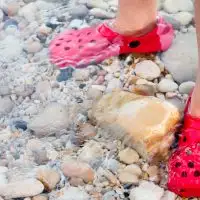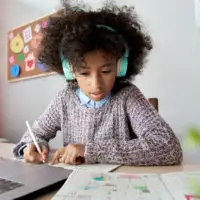The decision to travel with your kids during the COVID-19 outbreak is a personal one.
If you’re still planning to take your spring break trip or go on that long-awaited summer vacation, there are some safety measures you can take to stay as healthy as possible. We spoke with several experts about what you should do if traveling during the Coronavirus outbreak, especially when flying.
1. Talk to your kids.
Are your kids asking questions about COVID-19? Talk to them, but keep it age-appropriate. “Most young children can’t comprehend the complexities of Coronavirus, so keep it simple. Be reassuring and empower them to stay healthy,” says Dr. Dawn Davenport, Vice President of Child & Family Services at the Mental Health Center of Denver. “No matter what their age, your children read cues from you, so a confident and reassuring tone is ideal. Talk through what you can do to protect yourselves and reassure them that a relatively small percentage of people who get sick become seriously ill.”
2. Choose your airline seat wisely.
It’s a bit of an urban myth that the recirculated air on a plane can make you sick. In fact, where you sit plays a much larger role. Many researchers now agree that you should sit in a window seat to avoid airborne-illness when traveling. The recommendation comes from a study published in 2018 that looked at the behaviors, movements, and transmission of droplet-mediated respiratory diseases during transcontinental flights.
3. Pack a travel thermometer.
It’s always a good idea to pack a travel thermometer. (Pro tip: This also helps decipher between real illness versus someone not wanting to participate in an activity on vacation!) Also pack any medications and prescriptions you might need. Due to shortages and varying factors by destination, you shouldn’t rely on the local pharmacy for help.
4. Wash your hands.
This is the number one deterrent to any virus. A good rule of thumb: ask your kids to sing the entire happy birthday song aloud to ensure they’re washing long enough to properly cleanse. Wash hands pre- and post-flight, and before and after eating any meals. Also be sure to pack hand sanitizer.
5. Wipe everything down.
This includes the front and back of the seat tray, as well as the hardware, armrests, television and sound controls (basically everything). If you’re lucky enough to find wet wipes that have disinfectant and antibacterial properties, those are best. If you find yourself without any wipes (most have sold out), ask the flight attendant for extra spray and take the liberty to wipe down the seat area yourself. Alternatively, you can pack a few travel-sized bottles of liquid cleaning product and paper towels in your carry-on bag.
6. Rinse with saline spray.
If traveling with infants or toddlers, rinse their nose with saline solution before and after the flight, suggests Dr. Stanley Kerstein, MD, based in Denver. This is simply an extra cleanse and hydration boost that will benefit them. Older children and adults can and should do this as well.
7. Cover your seats with blankets.
Kerstein also suggests packing breathable blankets to throw over the seats after you’ve wiped them down. This will provide an extra barrier between you and any germs on your seats. We recommend the blankets by Aden + Anais, which are often sold in bundles at Target. They’re made of muslin material, like cloth, but breathable. They’re also easy to fold up, wash in a sink, and air dry.
8. Drink water.
Don’t rely on water bottles at the airport, either. Bring your own reusable bottles from home, and fill them up after you get through security. Many airports have hands-free water dispensers.
9. Eat well.
It’s unclear whether or not Vitamin C can prevent someone from contracting the Coronavirus, While it certainly can’t hurt, it’s also a good idea to eat well before, during, and after your vacation. Make sure your family is eating a colorful diet, with produce of every color. The healthy foods will provide incredible natural vitamins through absorption.
10. Take a deep breath.
The most important thing to do before you even check in at the airport is take a deep breath. It’s going to be OK. The more stressed, anxious and worried you are, the weaker your immune system will become, and the more susceptible you are to transmission of any illness. Mentally prepare for the family adventure.
11. Stay up-to-date on travel warnings.
Use all available resources to make an educated decision about whether or not to cancel your trip, and check them often. “What might be a low-risk region now can drastically change within a couple of days,” says Dr. Amy Nash, MD, pediatrician at Stapleton and Pearl Street Pediatrics in Denver.
World Health Organization (WHO) Global Tracking: This page allows you track the number of cases of COVID-19 and where they’re occurring in real-time.
CDC Travel Advisories: Follow the latest advisories for cruise ship travel, high-risk destinations, and beyond.
COVID-19 Flight Waivers and Refund Policies by Airline: Airfarewatchdog has a helpful guide to each major airline’s policies for waivers and refunds.
Julie Bielenberg is a Denver-based journalist and Colorado’s leading agritourism writer. She contributes her expertise to various outlets including AAA, USA Today 10 Best, 5280, Westword, Mountain Town Magazine, Hunting Life, and Mile High Mamas. Julie also works with the National Dude Ranchers Association. When she’s not traveling or on horseback, Julie is at home with her husband and three young children, who are passionate about everything Colorado has to offer, from skiing to hot springs! Follow Julie’s adventures, @slowandgotraveler.
Our team of parents and travel experts chooses each product and service we recommend. Anything you purchase through links on our site may earn us a commission.







